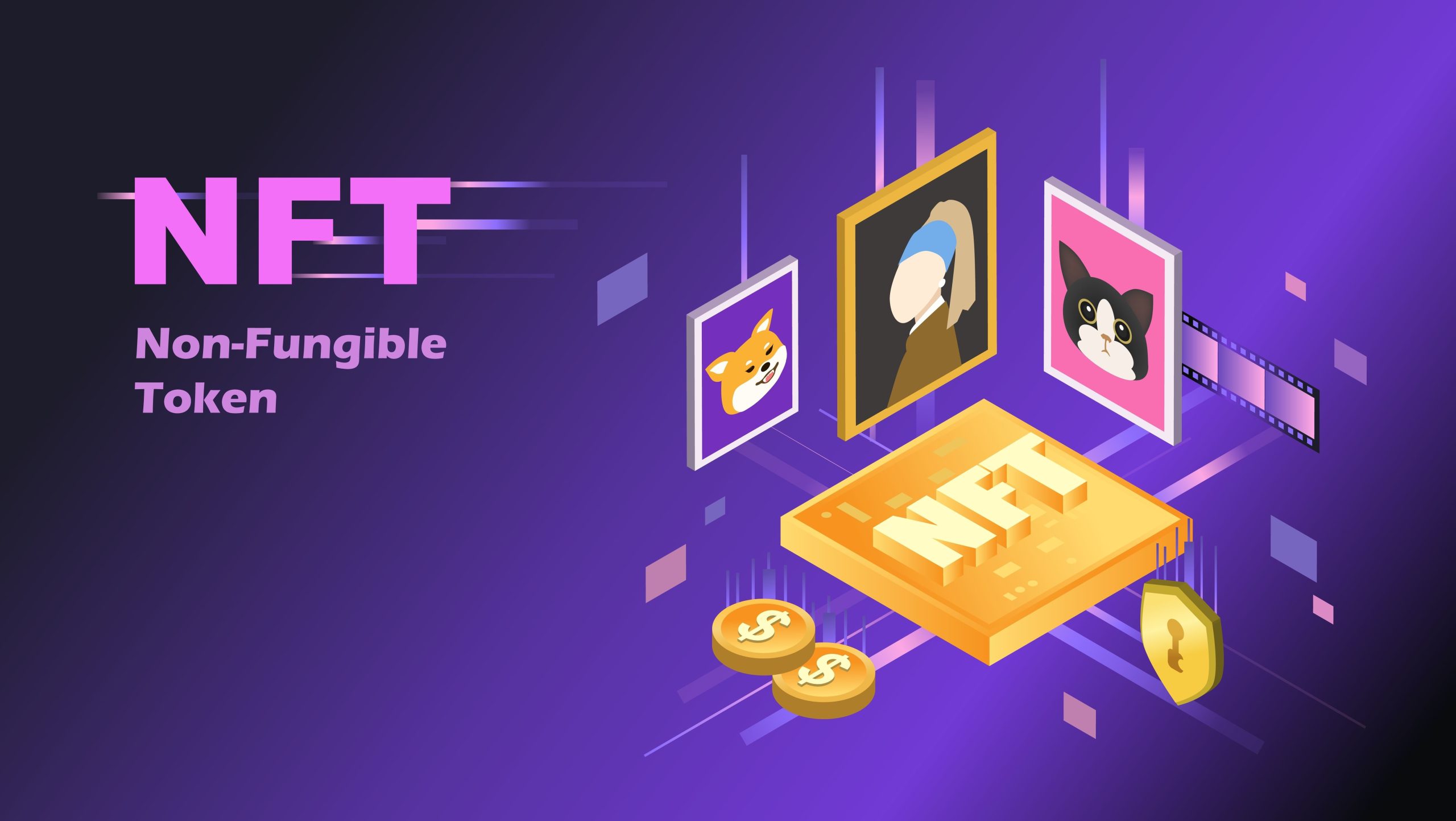
September 6, 2023
Non-fungible tokens (NFTs) have taken the digital world by storm, offering unique ownership and provenance of digital assets. While they have gained significant attention in the art and entertainment industries, NFTs also present exciting opportunities for businesses to enhance their digital strategies. In this article, we will explore how to integrate NFTs into your digital strategy effectively.
Understand the Basics of NFTs
Before diving into the integration process, it’s crucial to have a solid understanding of what NFTs are. NFTs are unique digital tokens that represent ownership or proof of authenticity of a digital or physical item. These tokens are typically built on blockchain technology, which ensures transparency, security, and scarcity.
Identify Your Objectives
Like any digital strategy, integrating NFTs should begin with a clear set of objectives. Ask yourself:
- What are your business goals with NFTs? (e.g., brand exposure, revenue generation, customer engagement)
- How will NFTs complement your existing products or services?
- Who is your target audience for NFT offerings?
Having a clear vision of what you want to achieve will guide your NFT integration strategy.
Create Unique NFT Content
NFTs thrive on uniqueness. To stand out in the NFT market, you need to create one-of-a-kind digital assets. These assets can be digital art, collectibles, music, virtual real estate, or even exclusive access tokens to events or services.
Collaborating with artists, designers, or creators can help you generate compelling and unique NFT content. Remember that authenticity and scarcity are key drivers for NFT value.
Choose the Right Blockchain
Selecting the appropriate blockchain for your NFTs is essential. Ethereum is the most popular blockchain for NFTs, but other options like Binance Smart Chain and Flow have gained traction. Consider factors like transaction costs, scalability, and your target audience’s blockchain preferences when making your choice. Let’s take a look at some of the most popular blockchains:
1. Ethereum
Pros:
- Widespread adoption: Ethereum is the most popular blockchain for NFTs, offering a large and active user base.
- Interoperability: many NFT marketplaces, wallets, and tools are built on Ethereum, providing a well-established ecosystem.
- High security: Ethereum’s security features, including robust smart contract functionality, make it a trusted platform for NFTs.
Cons:
- Scalability issues: Ethereum has faced scalability challenges, resulting in high gas fees and slower transaction times during periods of high demand.
- Environmental concerns: Ethereum’s energy-intensive proof-of-work (PoW) consensus mechanism has raised environmental concerns.
2. Binance Smart Chain (BSC)
Pros:
- Lower transaction costs: BSC offers lower gas fees compared to Ethereum, making it a cost-effective choice for NFT transactions.
- Faster transactions: BSC is known for its faster block confirmation times, ensuring quicker NFT minting and trading.
Cons:
- Centralization concerns: BSC’s consensus mechanism relies on a smaller number of validators, leading to concerns about centralization.
- Less developer activity: while growing, BSC’s NFT ecosystem is still smaller compared to Ethereum.
3. Flow
Pros:
- Built for NFTs: Flow was designed with NFTs in mind, offering a native environment optimized for digital collectibles and experiences.
- Energy efficiency: Flow uses a proof-of-stake (PoS) consensus mechanism, making it more energy-efficient than Ethereum’s PoW.
Cons:
- Less established: Flow is a relatively new blockchain, and its ecosystem is still developing, with fewer NFT marketplaces and tools available.
- Limited adoption: Flow’s adoption isn’t as widespread as Ethereum or BSC.
4. Tezos
Pros:
- Smart contracts: Tezos supports smart contracts and has a focus on self-amendment, allowing for protocol upgrades without hard forks.
- Governance: Tezos has a built-in governance mechanism, enabling token holders to participate in network decision-making.
Cons:
- Smaller ecosystem: the Tezos NFT ecosystem is smaller compared to Ethereum, which means fewer options for NFT marketplaces and services.
- Learning curve: developing on Tezos may have a steeper learning curve for those accustomed to Ethereum.
The choice of blockchain should align with your objectives and the preferences of your target audience, as well as consider the most recent advancements and trends in the NFT ecosystem.
Ensure Transparency and Security
Transparency is one of the blockchain’s core features, and it’s crucial for NFT integration. Use smart contracts to establish clear rules for ownership, royalties, and resale rights. This ensures that creators and stakeholders are fairly compensated throughout the lifecycle of the NFT.
Security is also paramount. Protect your NFTs and users’ data from cyber threats and ensure the platform’s overall security to build trust with your audience.
Develop a User-Friendly Platform
User experience matters in NFT integration. Your platform should be intuitive, easy to navigate, and provide users with a seamless experience when minting, buying, selling, or trading NFTs. Remember, an accessible platform encourages broader adoption and engagement.
Market and Promote Your NFTs
Marketing is key to the success of your NFT integration. Leverage your existing digital channels, such as social media, email marketing, and influencers, to promote your NFT offerings. Highlight the unique features and benefits of your NFTs and emphasize the value they bring to your audience.
Once you have minted your NFTs and they are ready for the world to see, it’s essential to put effort into marketing and promotion. Here are some advanced strategies to help you stand out in the competitive NFT space:
Collaborate with influencers: partnering with influencers who align with your NFT niche can significantly boost your visibility. Influencers can create buzz around your NFT offerings by showcasing them to their engaged followers. Ensure that the influencers share your brand values and resonate with your target audience to maximize the impact of these partnerships.
Create a scarcity strategy: embracing the scarcity principle is one of the cornerstones of NFT success. Consider implementing limited-time offers, exclusive drops, or tiered membership systems that grant additional benefits to early adopters or loyal supporters. Scarcity not only drives demand but also encourages a sense of urgency among potential buyers.
Leverage social tokens: social tokens are blockchain-based tokens that represent ownership or membership in a community. You can issue social tokens to your most dedicated supporters, allowing them to access exclusive content, perks, or decision-making power within your NFT ecosystem. This fosters a deeper sense of community and engagement around your brand.
Engage with Your NFT Community
Building and nurturing a community around your NFTs is crucial for long-term success. Encourage discussions, feedback, and collaboration among NFT holders. Consider hosting virtual events, AMAs (Ask Me Anything), or exclusive experiences for your NFT community members.
Engage your audience through interactive campaigns that encourage participation. Host NFT giveaways, contests, or challenges that involve your community in creative ways. For instance, you can ask them to contribute ideas for new NFT collections or co-create NFTs through crowd-sourced artwork.
In addition, you can organize virtual events, conferences, or webinars related to your NFT offerings. These events can serve as educational platforms, networking opportunities, and spaces for showcasing your NFT collections. Additionally, hosting auctions or live NFT drops during these events can create a sense of excitement and exclusivity.
Monitor and Iterate
Regularly monitor the performance of your NFTs and digital strategy. Collect data on sales, engagement, and user feedback. Use this information to make informed decisions and iterate on your NFT offerings and digital strategy as necessary.
Conclusion
Integrating NFTs into your digital strategy can open up exciting opportunities for your business. By understanding the fundamentals of NFTs, setting clear objectives, creating unique content, and ensuring transparency and security, you can leverage this innovative technology to engage with your audience in new and meaningful ways. Keep evolving your strategy, stay attuned to market trends, and embrace the transformative potential of NFTs in the digital landscape.





